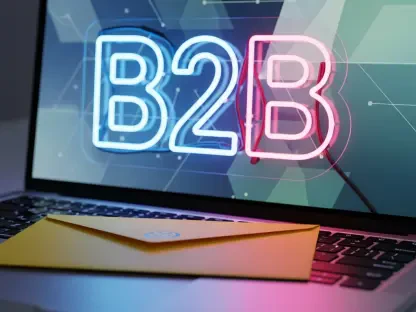Imagine scrolling through a social media feed where every image, video, or piece of text looks so polished and real that it’s impossible to tell if a human or a machine created it. This is no longer a distant concern but a pressing reality in 2025, as generative AI continues to blur the lines between authentic and synthetic content, making the need for transparency more urgent than ever. With studies showing that a significant portion of people struggle to identify AI-generated material, the risk of misinformation and eroded trust looms large. AI watermarking systems have emerged as a critical solution to this challenge, offering a way to label and identify content with clear markers of its origins. This review delves into the intricacies of this technology, examining its mechanisms, real-world impact, and the path forward in ensuring transparency in an increasingly digital world.
Understanding AI Watermarking Technology
AI watermarking systems are designed to address the growing difficulty of distinguishing between human-made and AI-generated or altered content. These systems embed visual or digital markers into media to signal the involvement of artificial intelligence, providing a layer of transparency crucial for maintaining trust. As generative AI technologies advance at a rapid pace, producing hyper-realistic outputs, the need for such tools has become undeniable across industries like advertising, journalism, and social media.
The broader technological landscape underscores the urgency of this innovation. With AI’s ability to replicate voices, craft lifelike images, and generate coherent text, ethical concerns about deception and misuse have surged. Regulatory bodies worldwide are stepping in, pushing for mandatory disclosure of synthetic content to protect consumers and ensure accountability. AI watermarking stands at the intersection of technology and ethics, offering a mechanism to meet these demands while fostering confidence in digital interactions.
This technology’s relevance extends beyond mere identification; it plays a pivotal role in shaping how society navigates the implications of AI. From combating misinformation to supporting regulatory compliance, watermarking systems are becoming a cornerstone of responsible AI deployment. Their development reflects a broader commitment to balancing innovation with integrity in a world where digital content is omnipresent.
Core Features and Mechanisms
Visual Identification Approaches
One of the primary methods of AI watermarking involves the use of visible icons or labels integrated directly into content. These markers are crafted for simplicity, often resembling familiar symbols similar to those on smartphone interfaces, ensuring that users can instantly recognize AI involvement without needing specialized knowledge. Such design prioritizes accessibility, making transparency a seamless part of the user experience across diverse platforms.
The strength of visual identification lies in its immediacy. Unlike complex systems that require additional steps to verify content origins, these markers provide an at-a-glance indication of AI contribution, whether in an image of a person, a product shot, or a synthesized voice. This approach is particularly effective for casual users who may not engage with deeper technical details but still value knowing the source of what they consume.
Moreover, visual systems are adaptable to various content types and contexts. They can be customized to reflect specific categories of AI involvement, ensuring clarity even when multiple elements of a piece are machine-generated. This flexibility enhances their utility in dynamic environments like social media, where content diversity and volume demand intuitive solutions.
Metadata and Embedded Techniques
Beyond visible markers, AI watermarking also employs metadata and hidden digital signatures to encode information about content origins. These embedded solutions store detailed data—such as the creator, date, or AI tools used—within the file itself, accessible through compatible platforms or tools. This method offers a robust way to verify authenticity without altering the content’s appearance.
However, the effectiveness of metadata-based systems hinges on platform support and user access to decoding tools. Unlike visual markers, these solutions are not universally intuitive, often requiring specific software or clicks to reveal the embedded information. This dependency poses challenges in ensuring consistent application and recognition across different ecosystems, limiting their reach for non-technical audiences.
Additionally, embedded watermarks face issues of durability and standardization. While they can withstand certain types of content manipulation, sophisticated alterations may strip or obscure the data. Efforts to create cross-platform compatibility are underway, but disparities in adoption and implementation continue to hinder their potential as a standalone transparency tool.
Innovations and Industry Developments
The field of AI watermarking is witnessing rapid advancements, with major players like Meta and Adobe pioneering proprietary labeling systems. Alongside these tech giants, innovative experiments by companies in the marketing sector are introducing intuitive iconography to signal AI contributions across diverse content categories. These efforts highlight a collective push toward making transparency a standard feature in digital media.
A notable trend is the shift toward platform-agnostic solutions that transcend individual ecosystems. Industry stakeholders are increasingly recognizing the need for unified standards that allow watermarks to be recognized regardless of where content is viewed. This move is driven by both consumer expectations for clarity and regulatory pressures that demand consistent disclosure of AI involvement starting from 2025 onward.
These developments also mirror a broader cultural shift within the tech industry toward accountability. As public awareness of AI’s capabilities grows, so does the demand for user-friendly designs that demystify synthetic content. Collaborative initiatives and coalitions are forming to address these needs, aiming to establish best practices that balance innovation with ethical responsibility in content creation.
Practical Applications in Various Sectors
AI watermarking systems are finding practical use across multiple industries, notably in advertising and social media, where distinguishing between real and synthetic content is paramount. Platforms are beginning to integrate visible markers to label AI-generated posts or ads, ensuring users are informed about the nature of what they engage with. This application directly supports trust-building in environments prone to misinformation.
In content creation, watermarking serves as a tool for compliance with emerging regulations like the EU AI Act, which mandates clear disclosure of AI-generated material. By adopting these systems, creators and brands proactively align with legal requirements while demonstrating a commitment to ethical practices. Such measures are proving essential in sectors where authenticity is a key value proposition.
Unique use cases are also emerging, such as in voice synthesis and music production, where watermarks indicate AI’s role in generating audio elements. These implementations not only aid in transparency but also help artists and companies navigate intellectual property concerns by clearly attributing machine contributions. As adoption grows, these applications are reshaping how industries communicate authenticity to their audiences.
Challenges Facing Implementation
Despite their promise, AI watermarking systems encounter significant technical hurdles. Ensuring the durability of watermarks against deliberate manipulation or removal remains a persistent issue, as sophisticated tools can sometimes bypass even the most secure markers. Developing tamper-proof solutions is a priority, but it requires ongoing innovation to stay ahead of evolving threats.
Regulatory challenges add another layer of complexity. Global standards for AI disclosure are inconsistent, with varying requirements across jurisdictions creating compliance difficulties for multinational entities. Harmonizing these frameworks is essential to avoid fragmented approaches that could undermine the technology’s effectiveness and confuse users about what markers signify.
Market adoption poses yet another obstacle. While some users embrace transparency tools, others remain indifferent, and existing solutions often lack the accessibility needed for widespread use. Overcoming these barriers involves not only improving design and functionality but also educating the public on the importance of identifying AI content. Industry efforts are focusing on bridging these gaps to enhance overall impact.
Looking Ahead to Future Possibilities
The trajectory of AI watermarking technology points toward the establishment of universal standards that could streamline transparency across all digital platforms. As collaborative efforts between tech companies and regulators intensify, the integration of watermarking with emerging AI tools is likely to become more seamless, embedding transparency directly into content creation workflows.
Anticipated breakthroughs include advanced detection mechanisms capable of identifying even subtle AI alterations with greater precision. Enhanced algorithms and machine learning models could bolster watermark resilience, making them harder to remove or forge. Such innovations would significantly strengthen trust in digital ecosystems where authenticity is increasingly questioned.
Long-term, AI watermarking has the potential to redefine consumer behavior and regulatory landscapes globally. By normalizing the practice of labeling synthetic content, it could cultivate a culture of informed consumption while providing a framework for lawmakers to build policies around. This evolution promises to anchor digital trust as a fundamental principle in the age of artificial intelligence.
Final Reflections
Looking back, this exploration of AI watermarking systems revealed their critical role in addressing the transparency challenges posed by generative AI. Their ability to label content through visual and embedded markers stood out as a vital step in maintaining authenticity across industries. The review highlighted both the strides made in practical applications and the persistent hurdles in technical durability and regulatory alignment.
Moving forward, the focus should shift to actionable collaboration among tech innovators, policymakers, and educators to establish universal watermarking standards. Prioritizing user-friendly designs that cater to diverse audiences will be key to driving adoption. Additionally, investing in public awareness campaigns can amplify the technology’s impact by emphasizing the value of knowing content origins.
As the digital landscape continues to evolve, stakeholders must remain agile, adapting watermarking solutions to counter emerging manipulation tactics. Exploring partnerships to integrate these systems into everyday tools can further embed transparency into user experiences. Ultimately, sustained effort and creativity in this space will ensure that trust remains a cornerstone of digital interactions for years to come.









